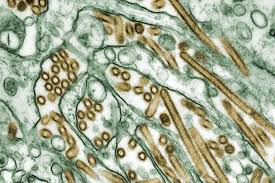Detection of H5N1 Avian Flu Virus in Los Angeles County Wastewater
In a recent health alert, Los Angeles County health officials confirmed the detection of the H5N1 avian flu virus in wastewater samples collected from a treatment facility located in Carson. This finding has initiated a series of precautionary measures and enhanced monitoring to evaluate the potential implications for public health. Despite the positive identification within the wastewater, health officials emphasize that the general public faces a low risk of transmission from the avian flu at this time.
Understanding H5N1 Avian Flu Virus
The H5N1 strain of avian influenza, commonly known as bird flu, is primarily associated with bird populations, particularly domestic poultry and wild birds. The virus can spread rapidly among birds, leading to significant mortality rates, especially in poultry flocks. Human infection is rare but can occur, typically through direct contact with infected birds or contaminated environments. The Centers for Disease Control and Prevention (CDC) classify the risk to the general public as low due to the rarity of human cases linked to H5N1.
Wastewater Testing and Monitoring Efforts
The virus was identified as part of Los Angeles County’s routine wastewater testing, which has been expanded to enhance public health monitoring amid rising concerns about animal-borne diseases. Officials from health departments across the country are increasingly utilizing wastewater surveillance to gather data on the presence of pathogens, including those that affect both animal and human populations. This proactive approach provides valuable insights into the prevalence of potentially harmful viruses in the community.
Precautionary Guidelines for Residents
In light of the recent findings, local authorities have issued precautionary guidelines aimed at mitigating risks to residents. Among the recommendations, residents are urged to avoid direct contact with wild birds, particularly those that appear sick or are deceased. The county’s public health department has also established a reporting protocol for residents to alert health authorities to any sightings of dead or visibly ill birds. This initiative aids in the swift assessment and response to any potential outbreak.
Protecting Poultry Farms
Poultry farmers have been specifically advised to bolster biosecurity measures to minimize the risk of the virus spreading among their flocks. Enhanced biosecurity practices may include limiting contact between domestic birds and wildlife, regular health checks of flocks, and appropriate sanitation measures within farms. Observing these recommendations is crucial to protecting both animal health and food supply stability in the region.
Pandemic Preparedness and Monitoring Collaborations
While there is no immediate threat to public health, the detection of H5N1 has sparked renewed conversations surrounding pandemic preparedness. Health officials are collaborating closely with the CDC to monitor developments and respond as necessary. Continued testing and monitoring efforts in both wildlife and domestic settings will be essential in addressing any changes in the situation and ensuring appropriate public health responses are ready to be deployed.
Conclusion
The detection of the H5N1 avian flu virus in wastewater samples represents a significant event warranting attention from health officials and the public alike. Although the immediate risk to human health remains low, adherence to recommended precautions and monitoring measures is essential. Continued vigilance and collaboration among health authorities will play a crucial role in safeguarding both public health and the well-being of local wildlife and agricultural interests.
Frequently Asked Questions (FAQs)
What is H5N1 avian flu?
H5N1 avian flu is a strain of influenza that primarily affects birds but can infect humans under certain conditions. It is associated with high mortality rates among infected bird populations.
How can humans contract H5N1 avian flu?
Human infection typically occurs through direct contact with infected birds or environments contaminated by the virus. The risk to the general public is considered low.
What precautions should residents take?
Residents should avoid direct contact with wild birds and report any sightings of sick or dead birds to the public health department.
Are there any immediate health risks to the public?
No, officials have indicated that the risk to the public remains low despite the detection of the virus in wastewater.
What are the recommendations for poultry farmers?
Poultry farmers are advised to implement enhanced biosecurity measures, such as reducing contact between wild birds and domestic flocks and maintaining proper sanitation practices on farms.

